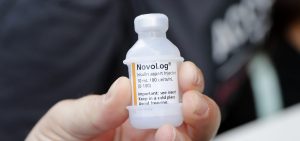News
Ohio lawmakers try to cap the cost of insulin again with bipartisan bills
By: Karen Kasler | Statehouse News Bureau
Posted on:
COLUMBUS, Ohio (Statehouse News Bureau) — A million Ohioans depend on insulin to manage their diabetes. The federal government capped insulin costs at $35 in the sweeping Inflation Reduction Act in 2022, but that’s only for seniors. There are bipartisan efforts to expand that in Ohio.

Reps. Munira Abdullahi (D-Columbus) and Thomas Hall (R-Madison Twp.) teamed up on the bill after finding out they both have type 1 diabetes, a lifelong condition.
“Comparatively, on the international scale, the cost of insulin in America is nearly ten times the world average,” Abdullahi said. “While the world ranges at $21 to as little as $8 in countries like Mexico, Canada and South Korea, in America, average price of insulin is $99.”
A total of 25 states have capped co-pays for insulin, according to the American Diabetes Association. Hall said the bill was modeled after one passed nearby.
“I think we looked at what West Virginia had done and tried to copy the bill,” Hall said. “The bill is actually these are my favorite bills because they’re only literally two pages.”
The Senate version, proposed by Sens. Hearcel Craig (D-Columbus) and Nathan Manning (R-North Ridgeville) was proposed a year ago. It’s had one hearing.
There have been four bills to cap insulin prices in the last two legislative sessions, and they’ve all gone nowhere. The House and Senate bills proposed in 2019 had no Republican sponsors or co-sponsors. Each got a single hearing. The House and Senate bills introduced in 2021 had bipartisan support, but they both died after two hearings in a Senate committee and one in a House committee.

